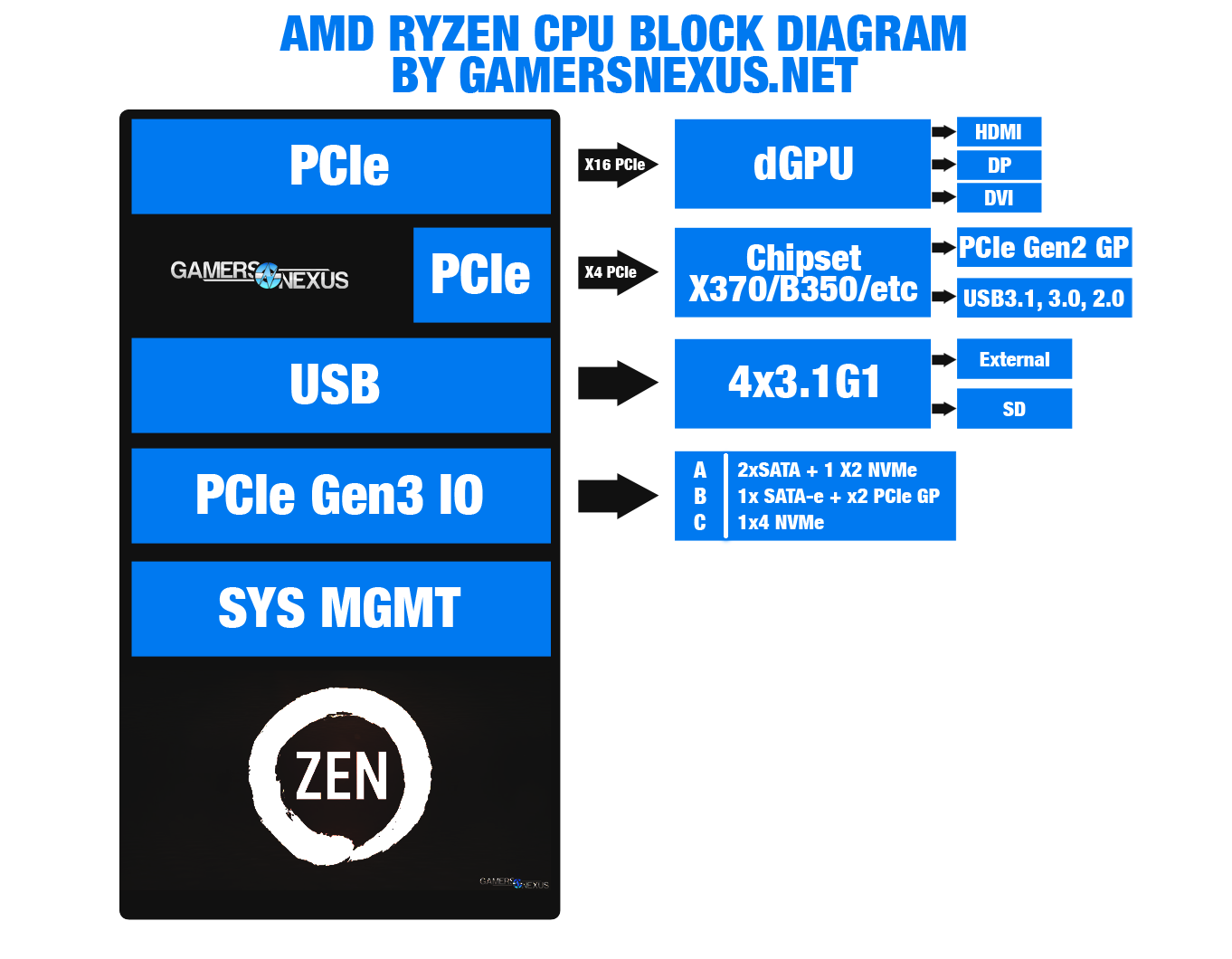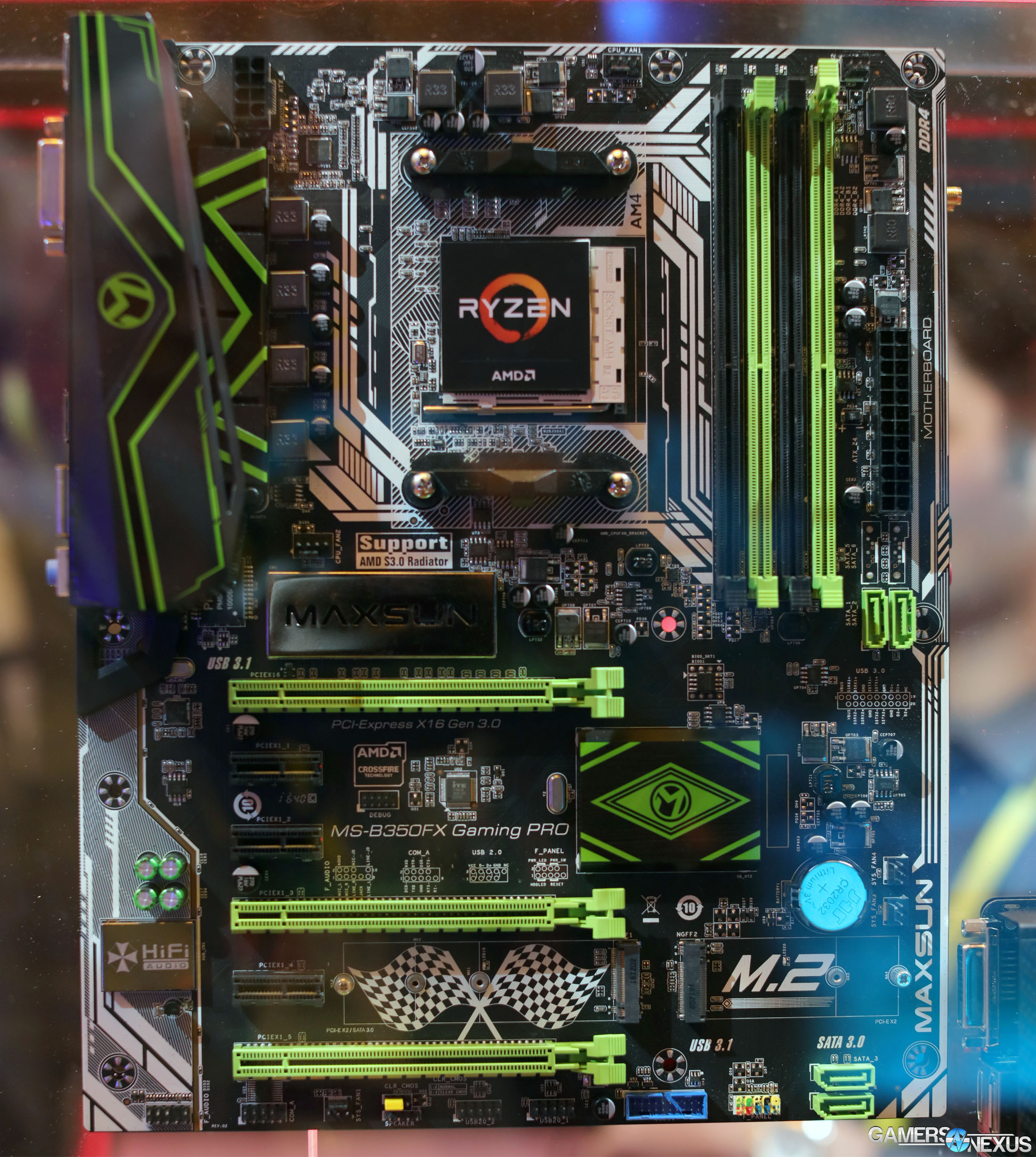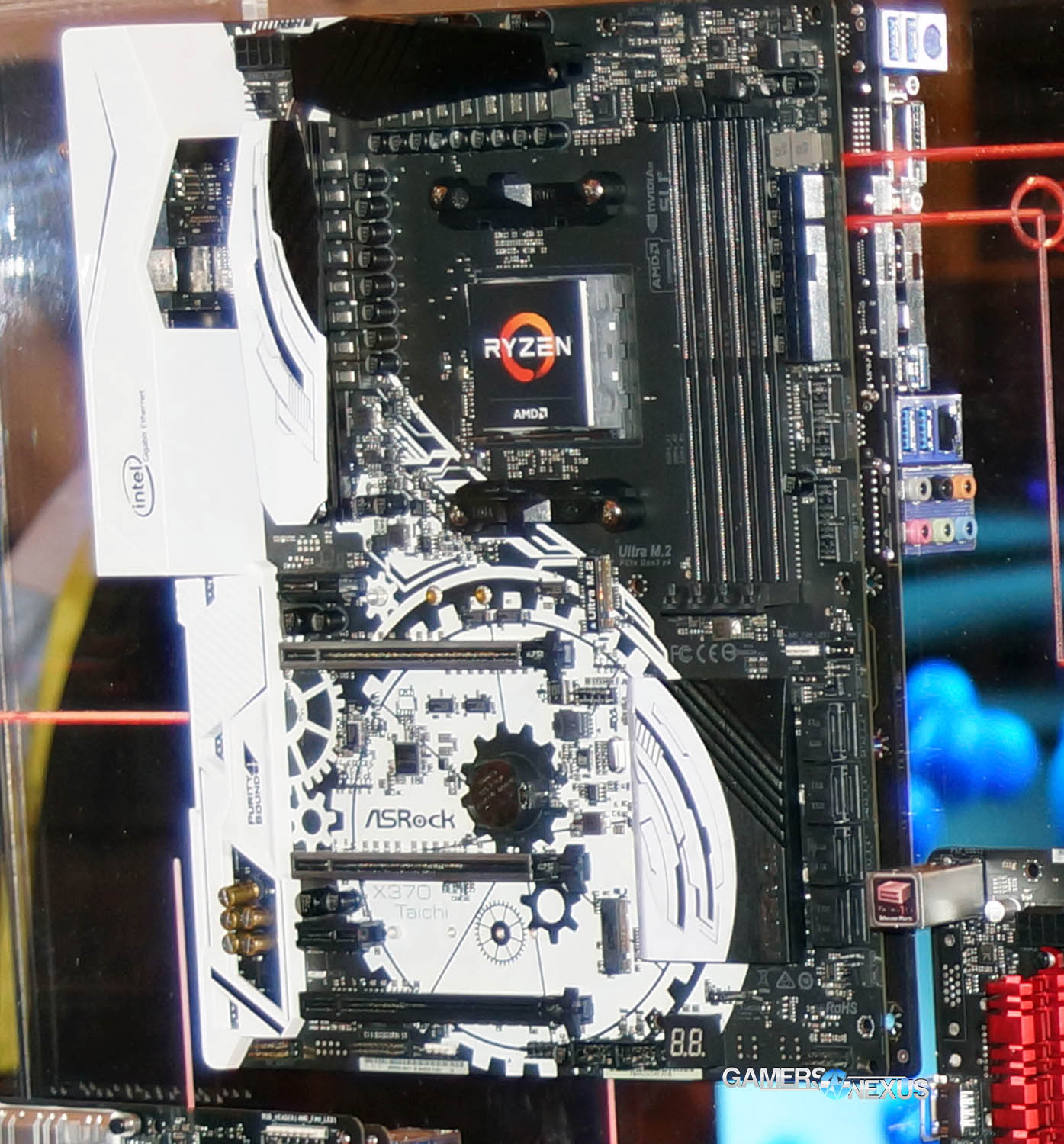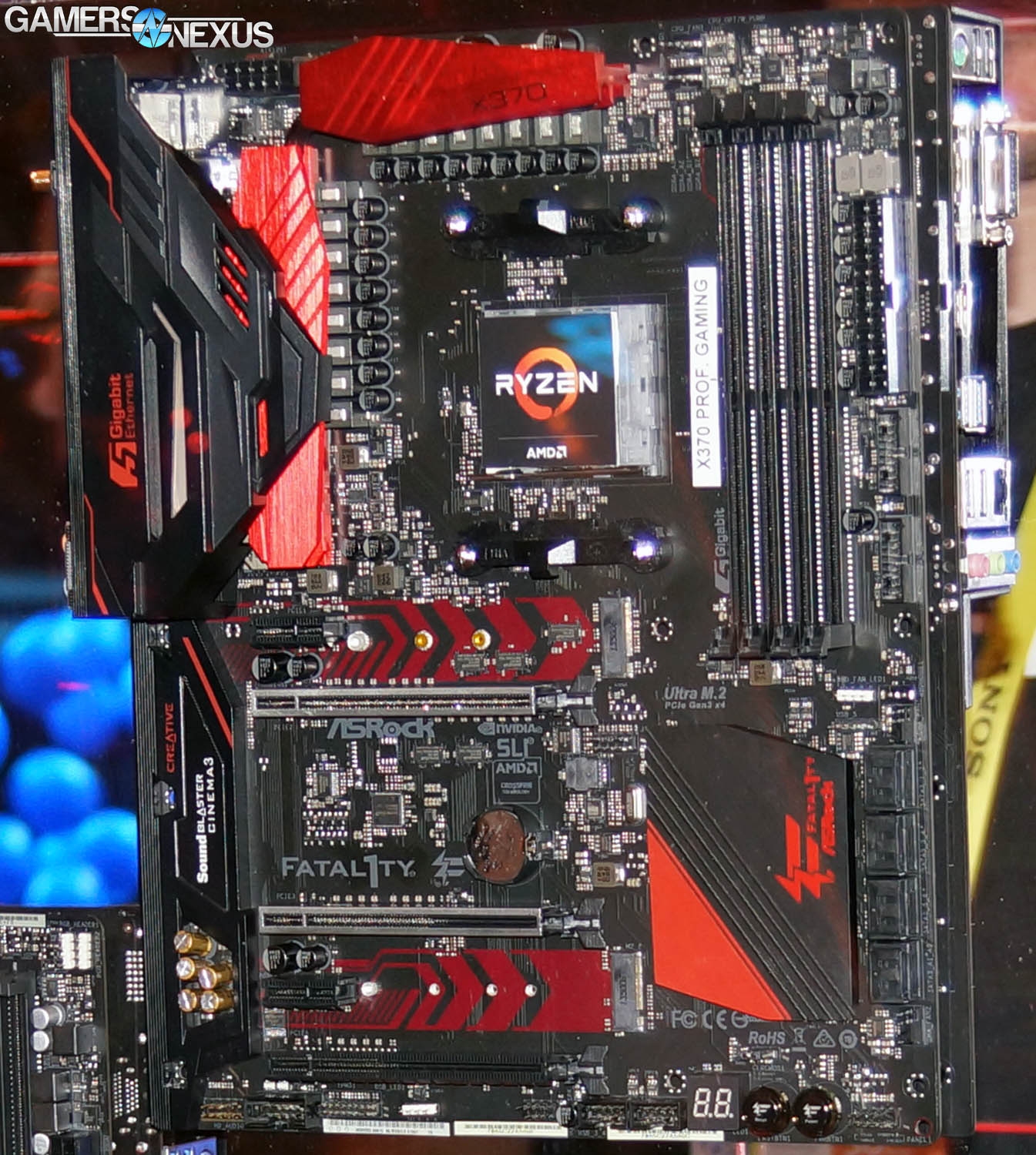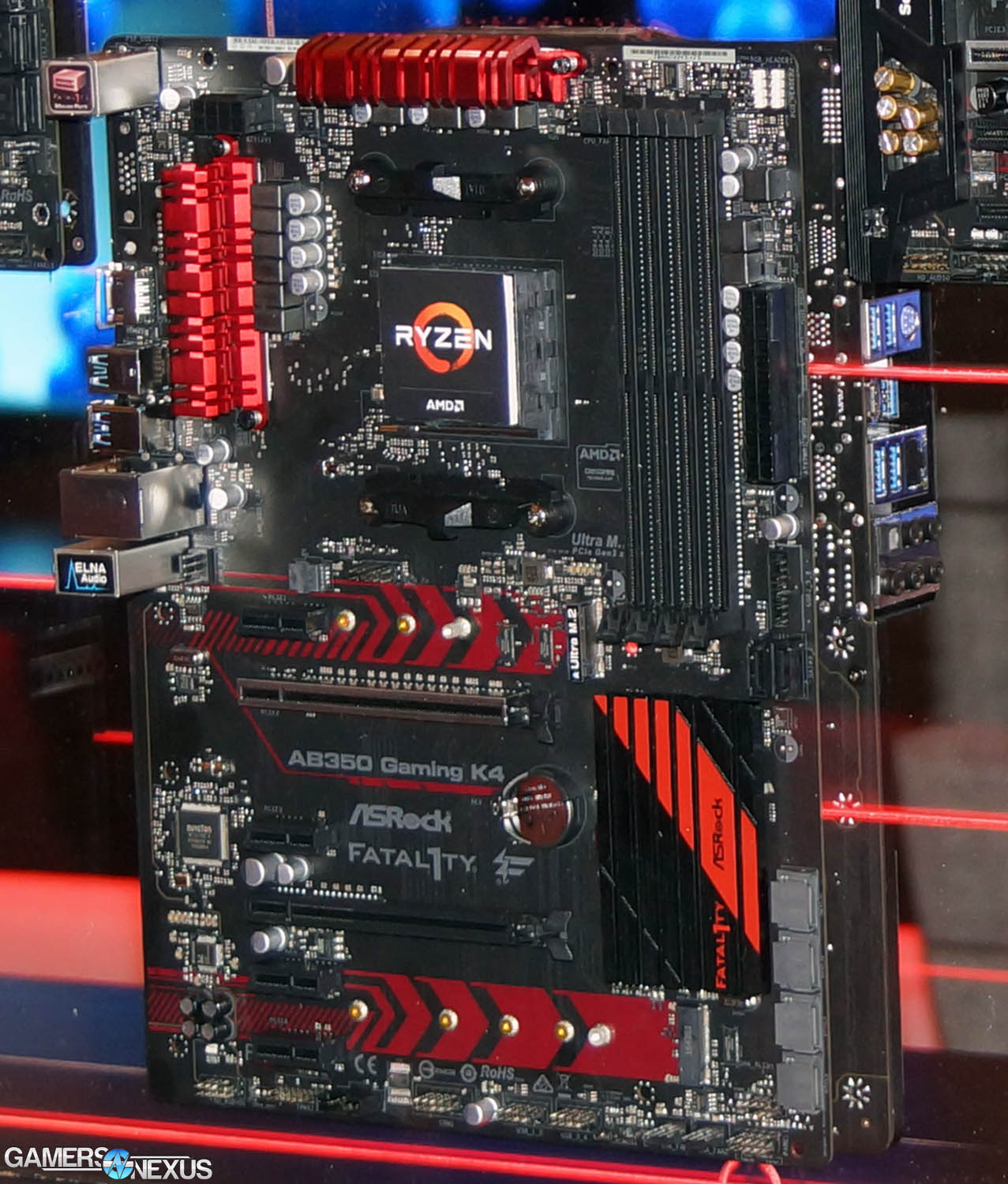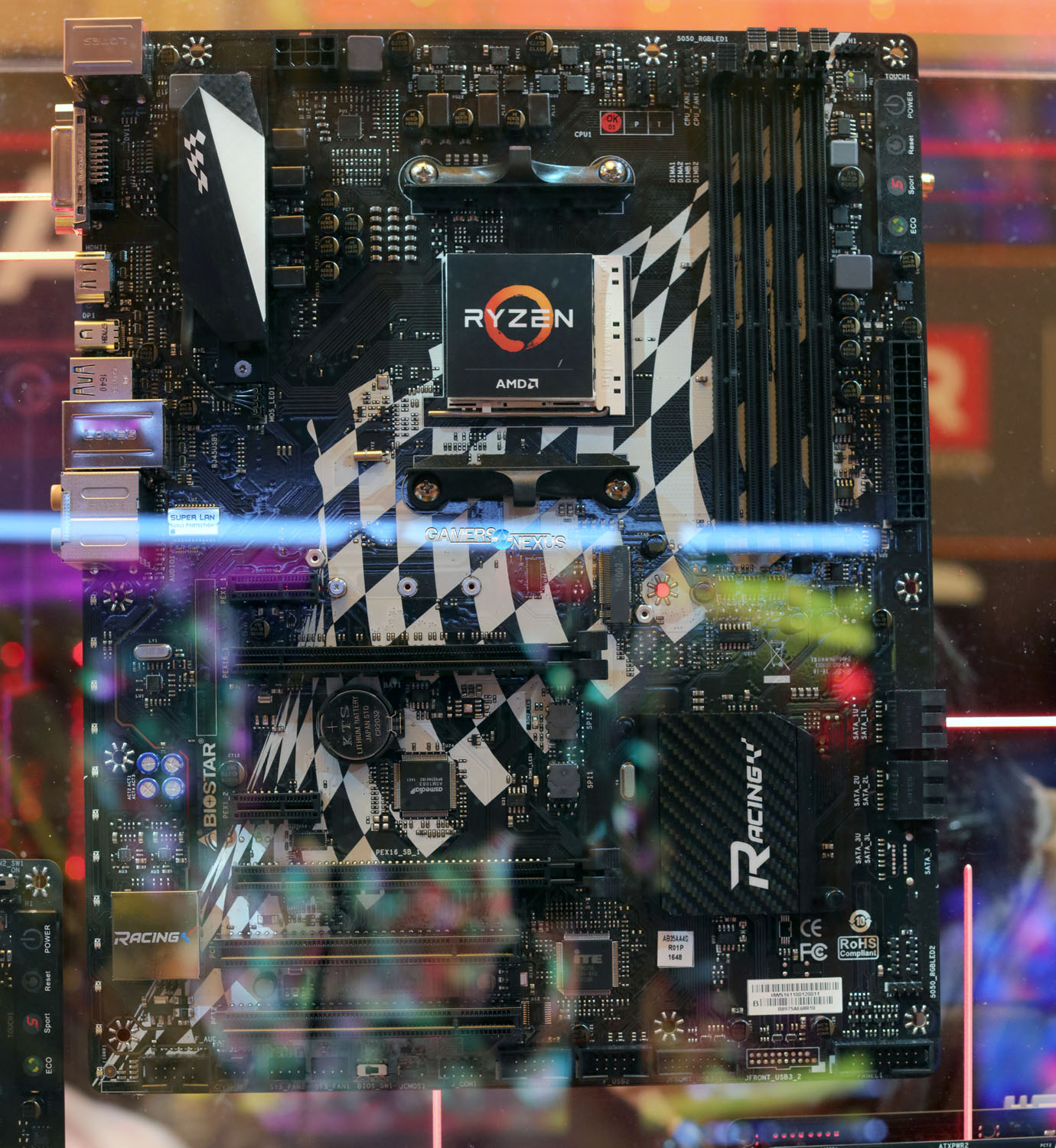CES 2017 allowed our team to dig deeper into the Zen architecture, its Ryzen family of CPUs, and the ensemble of AM4 motherboards in the pipes. There are currently “more than 50” SKUs of AM4 motherboards, according to the AMD team, and that’ll include the X370, B350, A320, and A/B/X300 chipsets. In this article, we’ll provide a GN-made block diagram of Ryzen’s PCIe lanes and other features, a look at ASRock and Biostar motherboards, and some brief notes on the S3.0 radiator.
For previous coverage of AM4 motherboards, check out our reporting on MSI’s XPOWER Titanium X370 and Gigabyte’s X370 / B350 gaming boards.
Before diving in, here’s a block diagram that GamersNexus created to better represent the Ryzen / Chipset relationship:
The Ryzen CPU will host 16 PCIe lanes dedicated for graphics, which can then be peeled-off into x16, x8/x8, or muxed into a three-way configuration. An additional x4 PCIe lanes are shot over to the chipset directly, whether that’s X370, B350, or A320, and split into general purpose PCIe Gen2 or USB3.1 G1/G2 and USB2.0.
USB support natively allows for 4x3.1 Gen1 ports straight out of Ryzen, which acts a bit like an SOC at this point, from which external device or SD card support can be stemmed. In a laptop, for instance, you might peel some of those lanes off to an SD card reader.
PCI-e Gen3 I/O is split into one of three options:
- A: 2x SATA + 1 X2 NVMe
- B: 1x SATA Express + x2 PCI-e General Purpose
- C: 1 x4 NVMe
The motherboard and connected devices will work together to determine which of the three gets utilized. SATA Express is primarily useful as it can be split into two SATA III devices or into more PCI-e lanes, and is not really meant for use as straight SATA Express. No one uses that.
AMD AM4 for Ryzen/300 Series Chipsets
Our first coverage of real AM4 product began at PAX Prime last year, where we reported on the newest line of 9000-series APUs using AM4 platforms. AMD has now re-introduced the AM4 platform with its X370 chipset, and has shifted focus over to Ryzen CPUs from the previous APUs.
AM4 moves to unify AMD’s motherboard platforms, eliminating the disparity between FM and AM lines. This means that APUs, previously relegated to the likes of FM2/FM2+, will now work with AM4; the same is true for the FX successor in the form of Ryzen. AM4 also adds DDR4 support (no news of DDR3L – it sounds like just DDR4), PCIe Gen3 native support, USB 3.1 Gen1 native support, limited USB3.1 Gen2 native support, NVMe storage support, and M.2 support.
We’ve already covered MSI and Gigabyte motherboards, so we’ll now look to ASRock, Biostar, and Maxsun for the rest.
Maxsun’s Contribution: “S3.0 Radiator”
China-based motherboard manufacturer Maxsun plays an important role in our largely US-driven coverage: The exposure of AMD’s cooling solutions, through branding that states “Support AMD S3.0 Radiator.” From this, we can postulate that AMD’s planning at least one CLC solution for its upcoming Ryzen CPUs, likely alongside a few other stock cooling solutions. We’ll explore that more in a post soon.
Beyond this, the Maxsun board has the usual support for (what appears to be) 4x SATA III ports, USB3.1 Gen1 support, a CLR CMOS button, a COM port (more common in the Asia market), and 2x M.2 ports that use PCIe x2 or SATA III.
ASRock AM4 Motherboards: X370 Taichi Specs, X370 Gaming K4, & More
ASRock’s lineup at AMD’s CES 2017 booth primarily highlighted the X370 Pro Gaming Fatal1ty motherboard and, to a lesser extent, the Taichi X370 motherboard. In total, ASRock brought these for display:
- ASRock X370 Taichi
- ASRock X370 Gaming K4
- ASRock AB350 Gaming K4
- ASRock A320M Pro 4
The A320M Pro 4 board is primarily relevant for its existence as a micro-ATX form factor, though isn’t quite the mini-ITX format we’ve been hoping to see from Zen (with the X300 chipset being so small).
The X370 Taichi has a VRM that’s loaded with inductors, but we’re unsure of the exact phase design and layout at this time; no representatives were present to provide depth. It looks like 16 total inductors, so we’re potentially encountering some doubling on the VRM with multiple phases pulled for the GPU.
It seems as if the Taichi is attempting to use the same “reinforced” PCIe slots that everyone else is using, with the PCIe slots electrically wired for x16 / x8 / x4 in the full-length slots.
We’re also seeing what looks to be 8x SATA III ports, M.2 via PCI-e x4 (“Ultra M.2”), and Gigabit Ethernet for high-speed I/O, carrying massive “Intel” branding on the I/O shroud.
Troubleshooting is present in the form of a seven segment display and some LEDs.
ASRock X370 Pro Gaming Fatal1ty Specs
Again, it looks like a total of 16 inductors (potential phases) near the CPU socket. Like the Taichi, there’s a single 8-pin power connector for EPS12V supply, leaving MSI solo in the space of providing additional power to the motherboard (XPOWER uses 1x8 + 1x4).
The board looks more or less the same as the Taichi, just with a few changes to SMDs and coloring. PCIe reinforcement is again present, again with slots wired at x16 / x8 / x4, and two full-length M.2 slots are available. At least one M.2 slot is rated for PCIe Gen3 x4.
ASRock Gaming K4 B350 Specs
The ASRock Gaming K4 AM4 motherboard uses the B350 chipset, positioning it more toward the mainstream level of platforms. It looks like this board has a total of 9 phases (maybe 8+1?). B350 technically supports overclocking, though we have noticed that AMD’s slide deck seems to indicate X370 requires a better cooling solution for overclocking. B350 did not indicate the same requirement. This could be an oversight in the slide deck, but could also mean that X370 will have a few extra OC options (or increased TDP expectations on the CPUs used with X370).
Regardless, there’s a single reinforced PCI-e slot (x16 wired), with the other PCI-e slot at just x4. Multi-GPU is not supported on B350. 2x M.2 devices can be fitted to the board, with at least one using PCI-e Gen3 x4 lanes.
It looks like the Gaming K4 supports 6x SATA III ports.
ASRock A320M Pro4
The A320M Pro4 is a simple board in terms of overall support. There’s no overclocking support, there will be no multi-GPU support, and the available high-speed I/O connections have been reduced. It is also micro-ATX in form factor, which stands the A320M Pro4 alone from the other boards.
A total of 4x DIMM slots are present, a single 8-pin power connector near the CPU, and there’s an RGB LED pinout near the top of the board (as we are unable to escape from the LEDs this cycle). 4x SATA III, 1x USB3.x header, and 2x M.2 sockets are all present.
Biostar B350 GT3, B350 GT5, & X370 GT7
We’re unsure which Biostar boards we were looking at while at AMD’s suite – they weren’t as clearly labeled as the others. It looks like the B350 GT series (probably GT5) will run a total of 7 phases, push buttons for “ECO” and “Sport” modes, and power/reset buttons on the board. Relevantly, there’s also a somewhat hidden multi-BIOS switch with two BIOS options.
A header near the USB3.0 socket indicates the presence of more RGB LED support (“5050 RGBLED”), likely serving as a connector for strips.
Solder points for a second USB3.x header are present and unused, as well as two additional solder points for SATA III blocks. It may be the case that this B350 board is reused for an X370 board later.
That’s all we’ve got for now. Continue following the site closely for more in-depth coverage on AMD’s Zen, Ryzen, and AM4 products.
Editorial: Steve “Lelldorianx” Burke
Video: Keegan “HornetSting” Gallick
Photography: Jim Vincent & Steve Burke
Additional Research: Eric Hamilton
